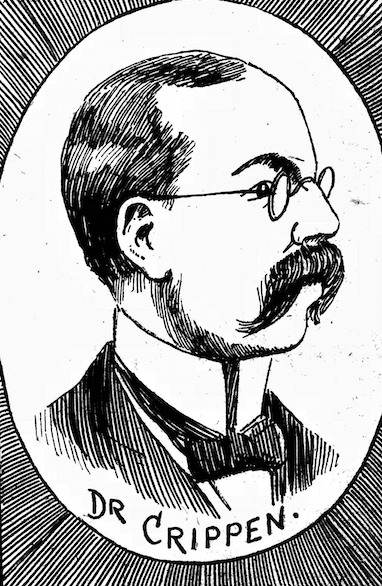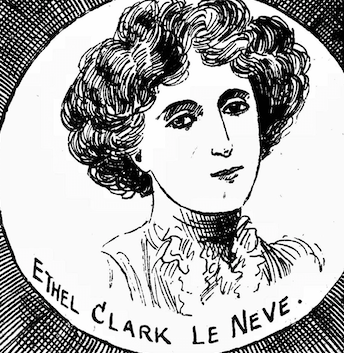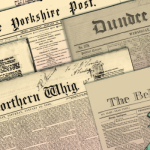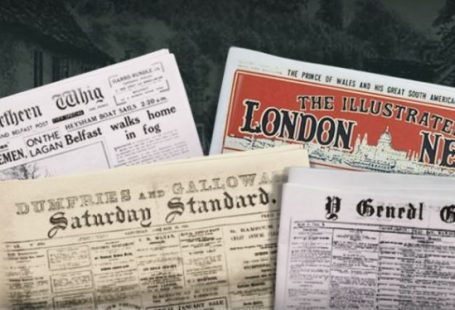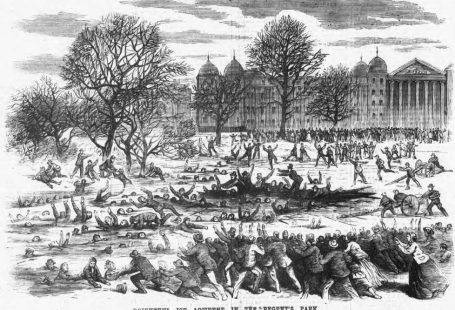On 31 July 1910, Hawley Harvey Crippen, better known as Dr Crippen, and Ethel Le Neve, his typist-turned-lover, were arrested on board the Montrose while trying to flee west to Canada. On top of being a sensational case and arrest, it was the first example of an arrest aided by wireless telegraphy.
A cross-Atlantic chase of a fleeing couple is an apt ending to our July theme of travel and migration. When you ask yourself why your ancestor or the subject of your research migrated, be sure to check out the newspapers for any criminal proceedings — just in case!
Dr Crippen

Hawley Crippen, an American-born homeopath who received his degree from the Cleveland Homeopathic Medical College in 1884, was first widowed in 1892. Following his first wife’s death, Crippen worked as a homeopath in New York. Two years later, Crippen married Corrine ‘Cora’ Turner, an aspiring music hall singer with the stage name Belle Elmore.
The American couple moved to England in 1897 where Crippen continued to work for Dr Munyon’s, a homeopathic pharmaceutical company. However, Crippen was let go in 1899 owing to spending too much of his time managing his wife’s career instead of seeing to his own work. Following this break with Munyon’s, Crippen took on the job of manager of Drouet’s Institution for the Deaf. It was there that he met the young typist Ethel Le Neve.
Meanwhile, in her efforts to make it on the stage, Cora made some valuable friendships — and ones that would prove even more so following her disappearance — the music hall performer Lil Hawthorne and her husband, John Nash, both friends of Scotland Yard Superintendent Frank Forest.

While Cora was known for her infidelity, by 1908, both she and her husband were having extramarital affairs, Cora with one of their borders and Crippen with Ethel.
Crime and investigation
Cora disappeared following a party held at the Crippen residence on 31 January 1910. Crippen told everyone that she had returned to America and later expanded this explanation to say that she had subsequently died and was cremated. Her disappearance was first reported by her friend, Kate Williams, a strongwoman, known as Vulcana. However, it wasn’t until the superintendent’s friends, Lil Hawthorne and John Nash, voiced their concerns that the police investigation got serious.

Shortly after Cora’s disappearance, Ethel moved in with Crippen and was frequently seen wearing Cora’s clothing.

Crippen’s home was searched to no avail. Crippen was brought in and questioned by Chief Inspector Walter Dew. During this interview, Crippen confessed to having lied about his wife’s disappearance, saying that he was trying to save face rather than admit that she had run off with one of her lovers. While Dew was satisfied with this explanation, Crippen was not privy to this and he and Ethel fled the country.
Flight and capture

The couple fled to Brussels and then onto Antwerp to board SS Montrose, a Canadian Pacific liner. Suspicious of their sudden flight from England, Dew searched Crippen’s home four times, finally unearthing the remains of a human torso under the basement’s brick floor. Other parts of the body were never discovered. Bernard Spilsbury, a pathologist, was able to identify traces of a calming drug from the remains.



While on board the Montrose, Crippen and Ethel (disguised as a boy) were identified by the captain, Henry George Kendall. He had the ship’s telegraphist send a wireless telegram to British authorities altering them to the whereabouts of the fugitives.

Upon receipt of this telegraph, Dew boarded the SS Laurentic, a White Star liner, due to arrive in Quebec before Crippen. Dew was able to alert Canadian authorities and board the Montrose in the guise of a ship’s captain once it docked. As Canada was still a dominion of the British Empire at this time, there was no issue in gaining custody of Crippen and sending him back to England.

Read a full account of the couple’s flight and capture
This sensational case continued to make headlines, both before and after the couple’s capture. Whilst the case unfolded, there was a humorous incident of mistaken identity, which was subsequently printed in the Illustrated Police News.

Whilst his efforts do seem to be motivated by the promise of a reward, his attempted action was deemed meritorious, and he was fined only 5 shillings.
Crippen in court

On 1 October 1910, it was reported that the coroner’s jury had returned the verdict of ‘willful murder’ against Dr Crippen, having determined that the remains in his cellar were those of his wife and that she had died of poisoning.

Crippen and Ethel were tried separately. The trial for Dr Crippen took place from 18 to 22 October 1910. News of the trial appeared in the newspapers across England and beyond — in some instances, making front page headlines, such as this article from the London Daily News:

While much of the reporting centred on Dr Crippen, there was also interest in his mistress, Miss Le Neve. In this article from the Illustrated Police News, details are included about Ethel and her last days in town as accounted for by her mother.

Ethel was not to be charged with playing a hand in the murder of Cora. She was instead charged only with being an accessory after the fact. Her trial took place on 25 October. Following her and Dr Crippen’s trials, Ethel had published her own account of her life and flight with Dr Crippen.

While Ethel’s fate was ultimately her freedom, Dr Crippen’s was far from it: at the close of his trial, he was found guilty of murder and sentenced to death.

Read an account of some of the legal proceedings
The Sheffield Evening Telegraph reported on the final visit between Crippen and Ethel, which took place the day before Crippen was scheduled to hang.

While Dr Crippen was unable to pen his own account as Ethel did, he did write some letters (to Ethel) from prison before his execution, professing his innocence and hope for bringing forth some sort of evidence to clear his name. Parts of his letters were reprinted in the Dublin Daily Express:

No petition proved fruitful, and Dr Crippen was executed on the morning of 23 November 1910.
However, forensic science has come a long way since 1910 and perhaps all was not as it then seemed. Was Dr Crippen innocent after all?


